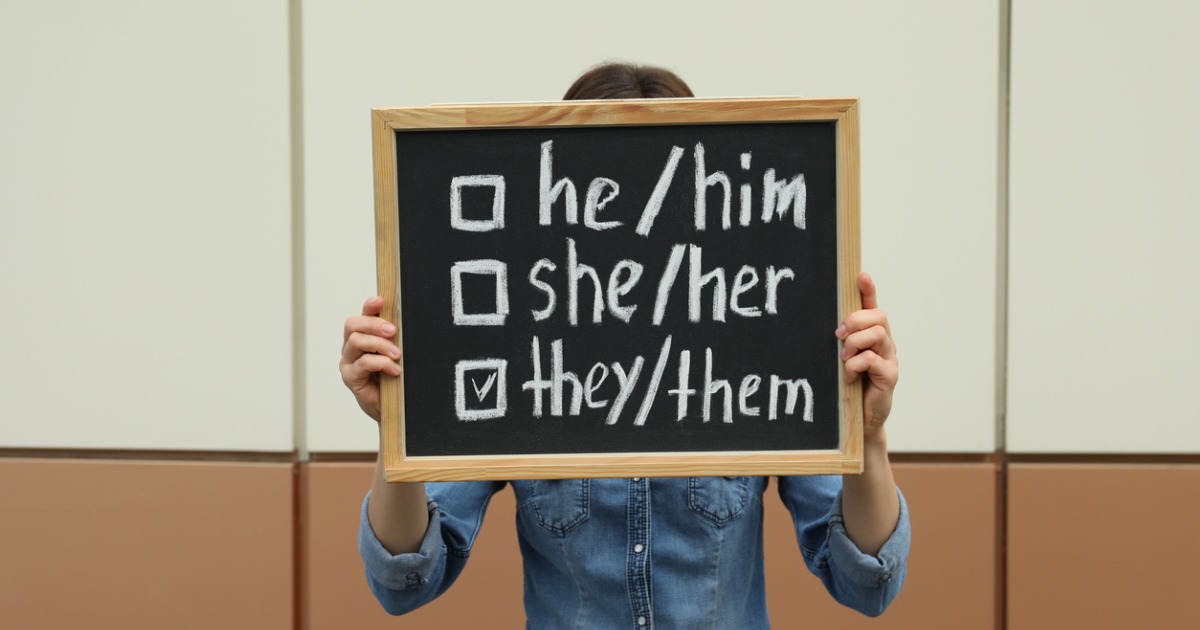2. Encourage kids to ask others for their pronouns—with respect and sensitivity.
Again, this depends on age and how curious they are about exploring the topic. Encourage them to avoid assumptions. Dialogue around this might look like:
“It’s awesome that you’re asking about this! It’s very important. When you’re meeting someone for the first time, you could say, ‘Hi, my name is Phoenix and I use they/them pronouns. Which pronouns do you use?’”
Even more important, let them know it’s ok to make mistakes. For many of us, the topic is new even though, for many around us, the struggle with gender identity is not new. If your kids make a mistake (like making assumptions as we discussed, or using incorrect pronouns when addressing someone), tell them to:
- Apologize and move on. It’s common to try “too hard” to make up for the mistake by harping on the issue, and then conversations feel awkward for everyone.
- Remember that everyone is doing their best and we are all learning. Everyone makes mistakes all the time—in all aspects of life.
3. Reassure your child it’s ok to change if they are exploring their own pronouns or gender identity.
In life, it’s completely normal to change to find what’s right for us. People are dynamic, and constantly learning. So, remind your kids:
- It’s ok to change your mind when exploring your gender identity or expression. This is called gender fluidity.
- Pronouns do not need to define someone’s gender. You can identify as female but use they/them pronouns, for example.
4. Gather age-appropriate books about pronoun diversity for infants, toddlers, kids, teens and adults.
Books make the best conversation starters and there is no age that’s “too young” to start teaching kids to be allies for gender and pronoun diversity. Here are a few recommendations by age group:
Ages 0-3:
The Pronoun Book: A board book that features illustrations, a diverse cast of characters and simple language.
Ages 3-6:
The Bare Naked Book: Originally written in 1986, this book has been updated to reflect modern-day themes of gender and inclusion. It contains illustrations and text that normalize all types of bodies.
Ages 6-8:
What Are Your Words? This book explores the many dimensions of what makes people, people. The main character, Ari, explores how using different pronouns makes them feel. It also covers how to ask people what their “words” are.
Ages 8-10:
Sex is a Funny Word: A Book About Bodies, Feelings and You: A comic book that explores gender, bodies and sexual orientation in an age-appropriate way.
Ages 10-12:
Too Bright to See: An 11-year-old named Bug explores their identity while also navigating grief and family issues—and meeting a ghost along the way!
Teens and Young Adults:
Gender Identity Workbook for Teens: An interactive book that teaches about gender identity and self-expression with engaging writing prompts, quizzes and activities.
The Pronoun Lowdown: Demystifying and Celebrating Gender Diversity: An approachable book that celebrates trans- and gender-diverse identities and LGBTQIA+ trailblazers and activists.
Not a book, but a free online resource: The Genderbread Person
A great website that helps families understand gender identity, gender expression and anatomical sex.

